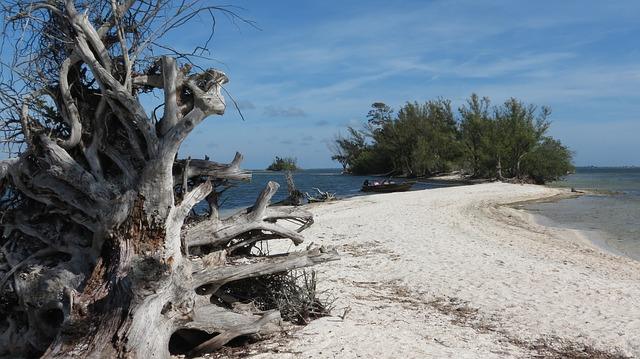The sun shone bright overhead when Captain Woodes Rogers of the ship “Duke” stepped ashore of the jagged and timbered island in 1709. Tall peaks jutted skyward as if the Great Pyramids of Giza lay beneath a cloak of green. A soft breeze offered limited relief from the incessant heat of the tropics.
Woodes and his men were privateers employed by the British crown. Effectively, this employed the men as well-connected pirates who sailed against its enemies, namely Spanish ships of the area. This particular island lay roughly 400 miles off the west coast of Chile and was by no means a hot spot of traffic. Capt. Rogers and his men were simply passing by on that February day when they decided to drop anchor offshore. A lookout soon spotted smoke rising from its dense foliage. Smoke? Surely in this case where there was smoke, there must be man. Curious, a handful of men landed on the island to investigate. With Spanish enemies seemingly teaming the oceans, tension hung over the men on their approach.
They were greeted not by a rival Spaniard, but by something much more bizarre. A white man stepped forth from the jungle, clad in nothing but goatskins for clothing. By the looks of the shaggy beard, unkempt hair (even by pirate standards), and weather worn look of the man, the sailors could tell this man was unusual. He approached apprehensively across the beach, like a wild animal approaching gawking tourists. Each party eyed the other beneath furrowed brows in that brief moment before introductions began. Although Capt. Rogers’ men could hardly understand the unclear garbling of the wild man, he seemed to be genuinely happy to see these Englishmen and began to tell them his story. It was a story that impressed even adventurous pirates.
Who Was It?
Alexander Selkirk (born Alexander Selcraig) of Scotland was born in the late 1600s to a cobbler (Selcraig, 2005). Not much is known of the Selcraig family other than they lived in the tiny fishing village of Lower Largo in southeast Scotland. It is also known the family regularly attended services at the Largo Kirk, or church. Incredibly, proof of their attendance is manifested in the recorded minutes of the church that are still available today. You see, Alexander was a bit of a hot head and had trouble controlling his temper. The Kirk minutes mention several episodes in which the church reprimanded the young Selcraig for improper behavior. The final mention of Alexander in these documents was in 1701, after the young man assaulted his brother after a prank at his expense (Selcraig, 2005). After being publicly rebuked in front of the congregation, Alex had had enough, and was determined to leave Lower Largo once and for all.
The Survival Water Filter That Fits In Your POCKET!
In those days a man with the right spirit and skills could find work privateering for the British crown. With hate in his heart and his eyes to the sea, Selcraig boarded the ship Cinque Ports and somehow became known as Alexander Selkirk for the rest of history. Cinque Ports and another ship, St. George, were bound for South America and the South Pacific. Plunder and treasure were being pillaged in the “New World,” and these ships were meant to secure these treasures for the British by any means necessary. As the ships left port, it is likely Selkirk had no idea of the adventure he was beginning.

Pirating was not an easy life. Not only did the men risk battles with other seamen and the natural adversaries of the sea, but other more real risks as well. Scurvy, fever, dysentery, typhus and a catalog of other diseases were often the most prevalent dangers a pirate faced. One could only be so fortunate to die on the keen edge of a Spanish sword, rather than the dull and painful edge of these diseases. Aboard the Cinque Ports, Selkirk faced these common enemies, but it was the ship’s captain that would eventually break him.
While out at sea Captain Charles Pickering died and was replaced by an arrogant young seaman named Thomas Stradling. Stradling never had the trust of his men and abused his power aboard the ship. Dissention grew and the young captain was looking to justify his rank and effectively snub the men into obedience. He would get his chance on a lonely island in the South Pacific off the coast of Chile.
How Did He End Up Deserted?
In 1704 the Cinque Ports dropped anchor off the tiny island in order to secure fresh meat, fish, vegetables and make repairs. For a month, the crew dutifully prepared the ship for their big voyage ahead that would take them across the immense expanse of the Pacific. The Cinque Ports was rotting, and the sailors whose lives were buoyed by that ship wanted to improve its structure more than anyone. After a month, Capt. Stradling called the men to hoist anchor and shove out to sea. It was at this point Selkirk’s independent nature boiled to the surface. He objected to the captain’s orders, citing the ship’s rotting hull as evidence it could not make the journey. Although the men had thrown their backs into the job, Selkirk was not confident of its strength. His conviction was unrelenting; in his mind the ship could not make the journey. Selkirk was so convinced of the ship’s dangerous framework he made a decision that would forever change his life.
As his blood boiled and his temper flared, Selkirk declared he would rather be cast away on the island than head out to sea aboard the ship. In an instant, Capt. Stradling saw the moment he had wanted. He speedily met the demands of the rebellious sailor and put Selkirk ashore with nothing more than a musket, some powder and lead, hatchet, knife, navigation tools, tobacco, cheese, jam, a bit of rum and his Bible (Selcraig, 2005). It was when the ship shoved off that Selkirk began to feel a great remorse for his request. He pleaded and begged the captain to allow him back on the ship. In front of the entire crew, Stradling refused the request, thus sealing his authority and demonstrating the fate of any dissenters still aboard.
It must have been a lonely feeling for Selkirk to watch the ship become a tiny dot on the horizon. Alexander found himself alone on a deserted island, and he would remain in isolation for the next 52 months of his life (BBC, 2016).
Fortunately for Selkirk, he had a few things going for him. For starters, the island was full of wildlife. Rats, goats, cats, lobster and fish all abounded, but it was the seals of the island that were the most numerous. Southern elephant seals dominated the island, so thick that later explorers would record they had to shoot a number of the seals just to make a path to walk ashore. In addition to the animal flesh, the island also was abundant in a number of different vegetables the stranded man ate. Fresh water was also easy to find, as the mountainous lands afforded a number of streams that made a quick dash to the surrounding ocean. Sure enough, Selkirk would become accustomed to his island diet, preferring goat meat above all else.
Battles With Loneliness
 Selkirk’s biggest adversary on the island was not hunger, predators or disease, but loneliness. The psychological war of isolation on people has been well-documented, and was surely the biggest threat to his well-being. Fortunately for Selkirk, he was able to pass his time pouring himself into his Bible, in addition to the number of survival tasks he would need to accomplish each day. The sailor could start a fire using his musket flints and tried to keep the flame burning day and night. The comforting effect of a burning campfire is still one of the biggest supports for a stranded person. In addition to fire chores, Selkirk also had to procure skins, tools and shelter. Eventually, he even tamed a few of the wild cats and gained a small degree of relationship with them.
Selkirk’s biggest adversary on the island was not hunger, predators or disease, but loneliness. The psychological war of isolation on people has been well-documented, and was surely the biggest threat to his well-being. Fortunately for Selkirk, he was able to pass his time pouring himself into his Bible, in addition to the number of survival tasks he would need to accomplish each day. The sailor could start a fire using his musket flints and tried to keep the flame burning day and night. The comforting effect of a burning campfire is still one of the biggest supports for a stranded person. In addition to fire chores, Selkirk also had to procure skins, tools and shelter. Eventually, he even tamed a few of the wild cats and gained a small degree of relationship with them.
This Cool-To-The-Touch Lantern Provides 100,000 Hours Of Emergency Backup Lighting
Another way Selkirk passed his time was to scan the horizon from a lookout point on a high rocky point. This vantage offered him the opportunity to look for passing ships and determine whether they were British friend … or Spanish foe.
Thus was the means by which Selkirk was able to signal Capt. Rogers in 1709. When the men of the Duke heard Selkirk’s story, they couldn’t help but feel some skepticism. Pirates like Alexander aren’t necessarily enlisted for their chivalry. Coincidentally, a man named William Dampier was aboard the Duke and actually had known Selkirk as a sailor of the Cinque Ports and could vouch for the legitimacy of his story. Dampier also informed Selkirk that his hunch the Cinque Ports could not make the journey had been proven right. The ship had, in fact, gone down off the coast of Chile, drowning most of the crew. A few men survived, only to be locked up in Spanish prisons.
Selkirk would board the Duke and eventually return home, riding a bit of celebrity status upon his arrival. For a free meal or a pint, Selkirk wandered the pubs of Britain, retelling his adventures on the faraway island of the Pacific. Eventually another Brit, Daniel Defoe, would come to learn of the Selkirk story. Defoe was a well-known author of the time, and the story simply mesmerized him. Although we don’t know if Defoe ever met Selkirk, we do know his story inspired Defoe to write one of the best novels of all time. The epic novel he drafted would prod the imagination of adventurous minds for generations to come. The renowned fictional character we know as Robinson Crusoe was born out of the real-life adventures of the lesser-known Scottish hothead Alexander Selkirk. His story of survival is truly one of the most inspiring in all of history.
Bibliography
BBC. (2016, September 1). Alexander Selkirk – the Real Robinson Crusoe? Retrieved September 17, 2016, from The European Lifeline; History Oddities: https://www.bbc.co.uk/history/scottishhistory/europe/oddities_europe.shtml
Selcraig, B. (2005, July 1). The Real Robinson Crusoe. Retrieved September 17, 2016, from Smithsonian.com: https://www.smithsonianmag.com/history/the-real-robinson-crusoe-74877644/?all










